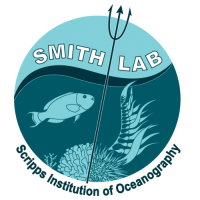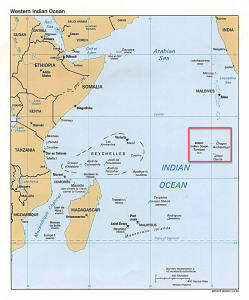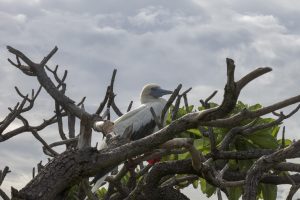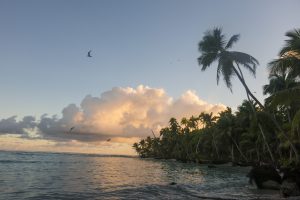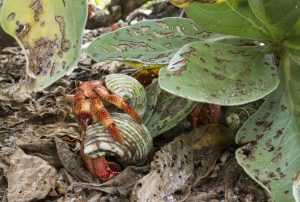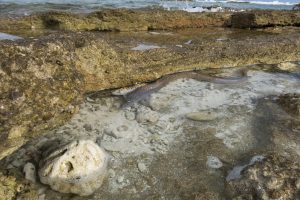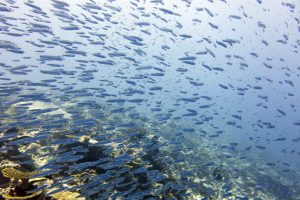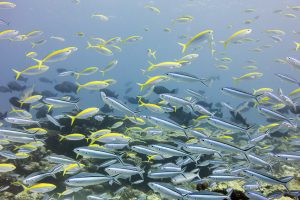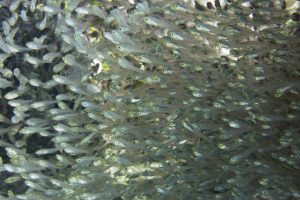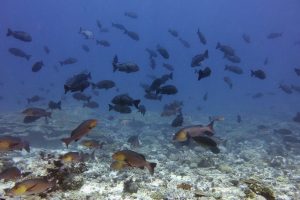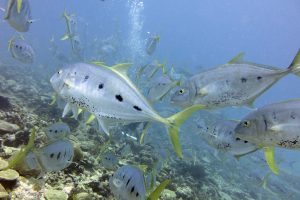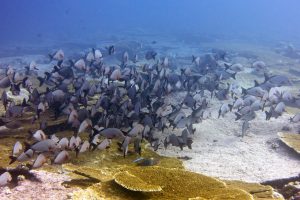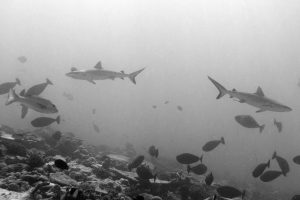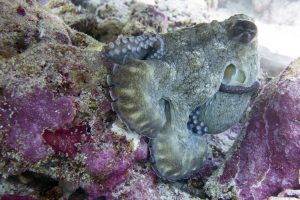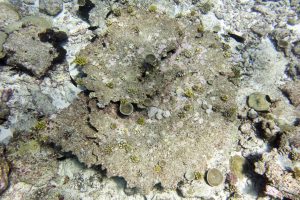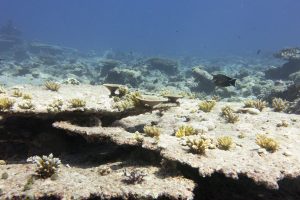By Samantha Clements.
This year, during the months of March and April, I conducted coral reef benthic surveys for the Khaled bin Sultan Living Oceans Foundation (KSLOF) in Chagos. Chagos is the largest archipelago in the world and lies within the British Indian Ocean Territory. The islands of the archipelago are very far from any continents and have been uninhabited and protected since the 1970’s, and therefore provide a unique environment, free of local human impacts, to study coral reefs and the faunal communities they support.
Since Chagos is protected from fishing, fish from all trophic levels, from herbivores to planktivores and predators, are able to thrive in large numbers. Additionally, they often grow to be much larger than similar species in areas where fishing is allowed.
Since Chagos is uninhabited, the corals that build the reefs are free from local anthropogenic stressors, such as pollution, sedimentation, and other direct interaction. The coral cover is relatively high on most reefs and often dominated by large tables of the genus Acropora.
Despite being free from local anthropogenic stressors, these corals are still susceptible to global stressors, such as ocean acidification and global warming. During our time in Chagos, our science team witnessed a coral bleaching event, the first reported in the Indian Ocean this year. For more information about the bleaching event, check out an interview with KSLOF’s chief scientist, Dr. Andrew Bruckner: http://www.cbsnews.com/news/indian-ocean-reefs-hit-by-coral-bleaching/.
Though bleaching can be detrimental to coral reefs if the event lasts for a long period of time, there is hope for recovery in Chagos, as recruitment of new corals is high in many places where past episodes of bleaching or disease have wiped out coral in the recent past.
Overall, the KSLOF Chagos expedition was an incredible adventure and a wonderful chance to see how a coral reef lives and functions without the direct interference of local human populations.

